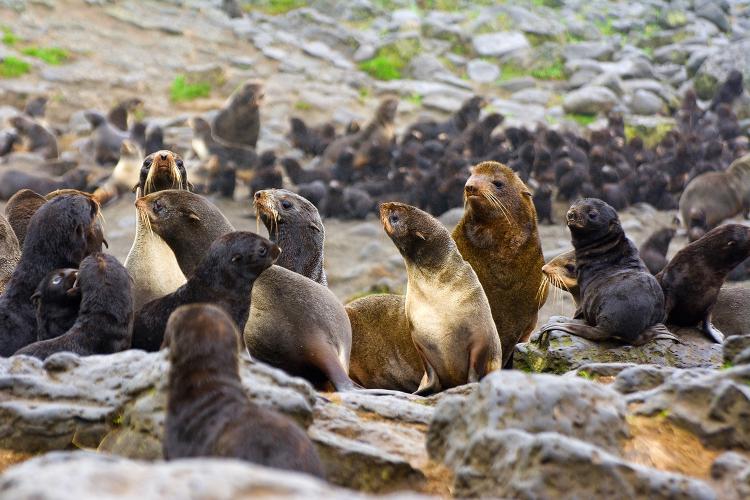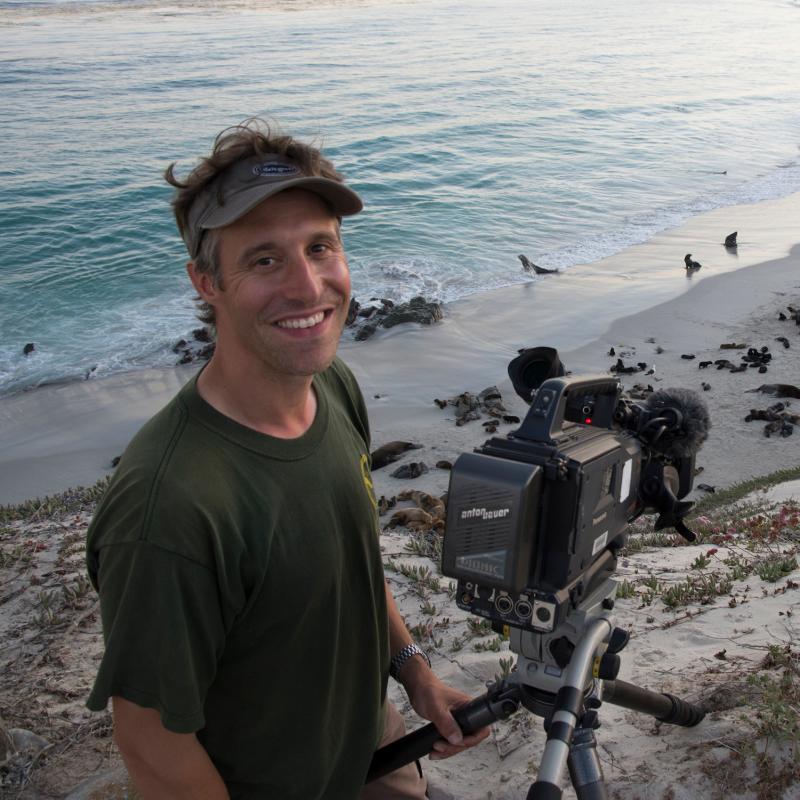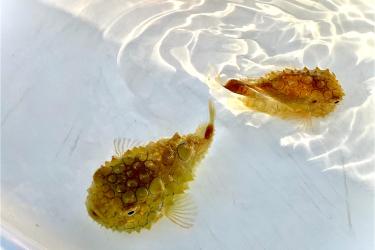The Mark-Recapture Method
Estimates of pup production have been used to assess the population size of northern fur seals on the Pribilof Islands since the early 1900s. This makes northern fur seals one of the most studied marine mammals on the planet. In fact, this dataset is one of the longest continuous datasets for any mammal population in the world. COVID canceled the 2020 census, which left a hole in this long record. This year, we followed carefully designed safety plans to get a smaller crew out to St. Paul Island to minimize a gap in the data.
As mentioned in the last blog entry, we are conducting a mark-recapture method to estimate the total number of pups born on St. Paul Island. This has been the method used since the early 1960s.
The way it works is simple. You mark a certain number of animals, let those animals mix back into the population, and then count the number of marked to unmarked animals in predetermined sample sizes. From the ratio of marked to unmarked, and knowing how many total animals you marked, you can then calculate the total population.
But you might be asking, how do you mark northern fur seal pups so you can see them in their very crowded groupings? Well, we give them a haircut.
Northern fur seals have a thick fur coat and soft under fur. This keeps them warm in the cold water and climate of the North Pacific Ocean. Those same attributes also made them an important resource in the late 19th and early 20th centuries when they were heavily harvested to make things like fur coats.
Unlike older animals, the fur seal pups are black, but their under-fur is white. So, the haircut mark trims the coarse outer guard hair, and exposes the white under-fur, which is very easy for biologists to see on follow-up surveys. The marks are very short-lived, because the pups will molt in a few weeks, but they remain long enough for us to observe them. Within a few weeks the pups shed their black newborn coat, and in its place grow a beautiful silver coat. The latter is much thicker and warmer, and prepares them for exposure to the cold Bering Sea waters and their winter migration.
Marking the fur seal pups is very difficult work. Over the course of our four days of “pup shearing” last week, our group of eight marked more than 3,000 pups in five different rookeries using manual handheld sheep shears. We were sure glad for a break. Over the weekend, we turned our efforts to another round of aerial surveys, maintaining receiver stations that monitor animals with radio tags, and preparing for re-sighting the marked pups.
On our final day of pup shearing, at the Zapadni Rookery, we encountered two fur seals that were entangled in marine debris. Rod, Rolf, and Brian F were able to isolate the animals and successfully cut the ropes free. This likely helped save both animals' lives. One of these two animals was an adult female with a pup, so this likely saved the pup’s life too.
Stay tuned for the next blog that will cover our second week of fur seal science. More coming soon!











